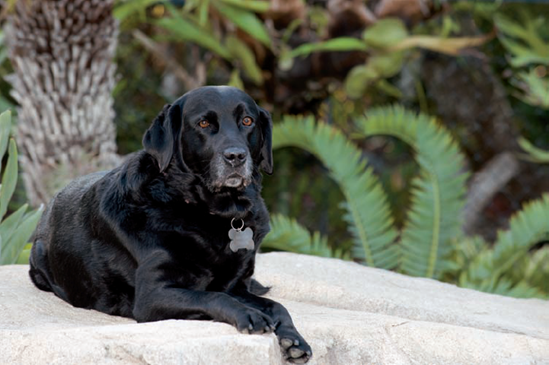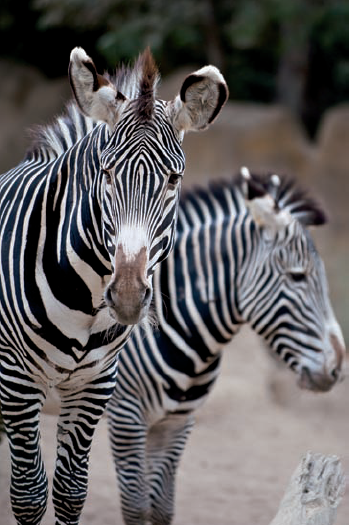Chapter 13. Wildlife and Animal Photography
There are ample opportunities to photograph animals, from household pets to majestic lions, if you know where to look. Special photo safari tours get you up close with wildlife, or you can just hang out with your dog in a park. The zoo is one of my favorite places to photograph; in a matter of hours I can photograph a wide variety of animals and still be home in time for dinner. Photographing animals in captivity means dealing with fences, glass barriers, and fake backgrounds, but there are ways to make your shots look like the ones in the nature magazines.

Shasta is a trained service dog and was a great model who held pose after pose for me. I had her sit up on a rock that gave me a background without any distractions. She was placed using the rule of thirds and I left space for her to move into. Taken at ISO 400, f/5.6, and 1/60 second.
Composition Considerations
When it comes to shooting animals, both the domestic and the wild kind, it is very important to capture personality. This is one of the reasons that I always try to focus on the eyes of my subject (see Figure 13.1).

Figure 13.1. These zebras were shot at the zoo over a fence with a path in the background. The focus is on the eyes, the zebra is placed with space to spare and also fills ...
Get Composition Digital Field Guide now with the O’Reilly learning platform.
O’Reilly members experience books, live events, courses curated by job role, and more from O’Reilly and nearly 200 top publishers.

